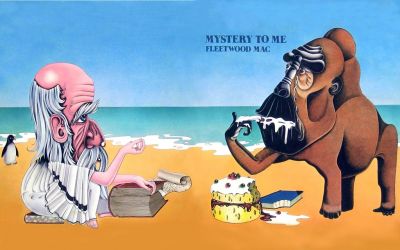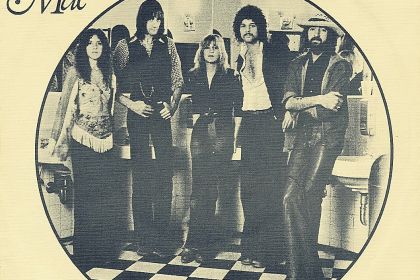SONGWRITER
Hypnotized: Fleetwood Mac's song about aliens

Mystery to Me LP cover
Hypnotized is the best-known track from Fleetwood Mac's 1973 album Mystery To Me, written by guitarist Bob Welch who became part of the band in the early 1970s. According to Welch, Hypnotized lyrics make references to UFO sightings, namely Pascagoula Abduction, as well as to Carlos Castaneda's mysticism in particular Don Genaro's levitation ability described in the song's third verse.
The second stanza, describing a strange pond in North Carolina, was inspired by the ominous story of Welch's acquaintance who stumbled upon a mysterious glass-edged crater in the middle of the forest while riding dirt bikes with friends. The lawn mentioned in the first verse is actually a tennis court located near the Benifold house in Hampshire where the band worked on their four albums, including Mystery To Me.
In the 1970s, many rock bands sought to find a new sound outside of the recording studios for which they usually rented mansions and used the mobile control room designed by the Rolling Stones specifically for this purpose. The main advantage of this method was considered to be a round-the-clock ability to work, but at the same time, the recording quality was noticeably reduced due to poor acoustics in rooms that were not suitable for recording.
Listen to Hypnotized by Fleetwood Mac:
Compositionally, Hypnotized is written according to the canons of tonal theory and follows the Aeolian mode, also known as the natural minor. In the harmonic analysis of the song's chord chains, the scale degrees (denoted with Roman numerals) show the following progressions in the key of С minor:
- Cm–Fm–Cm–A♭ or i–v–i–VI for verses, intro, and solo;
- Fm–A♭–Cm–Fm–Cm–A♭ or v–VI–i–v–i–VI for choruses.
Intros, verses, and solos develop against the same chord chain based on the v–i authentic cadence. In the choruses, the Fm dominant fifth-degree chord is followed by the A♭ sixth-degree submediant chord—a harmonic turnaround known as the deceptive cadence.



